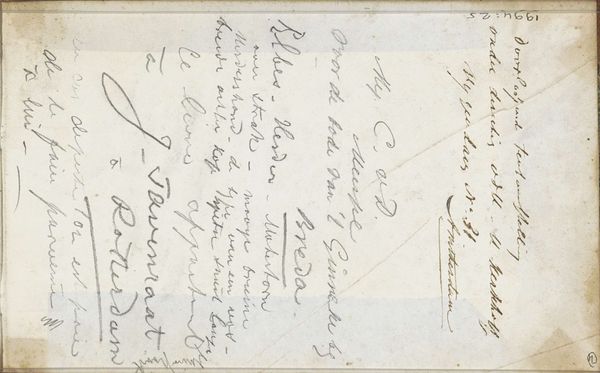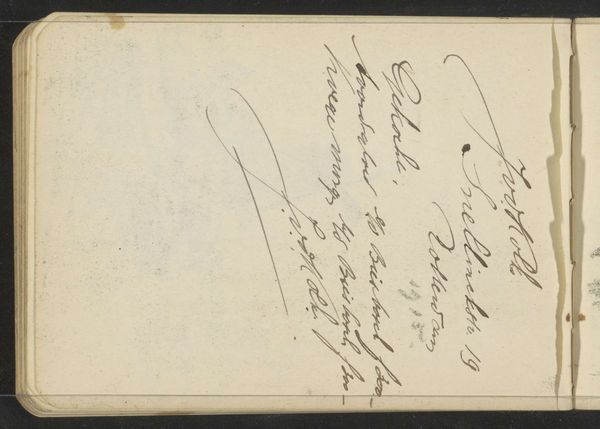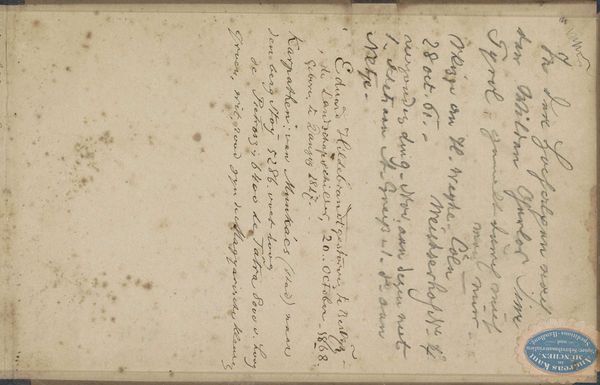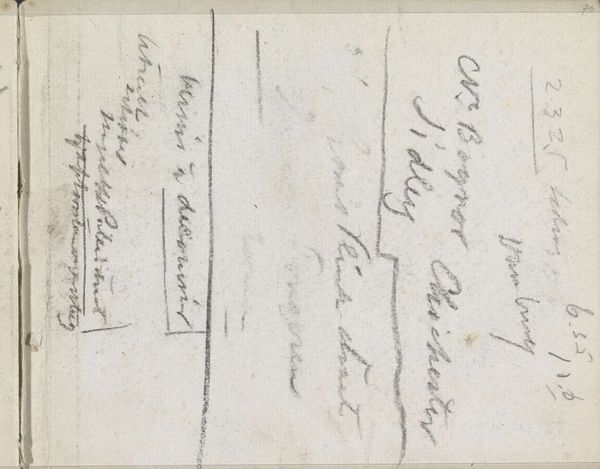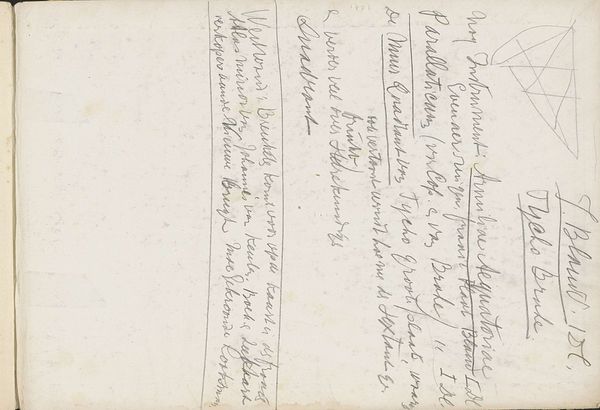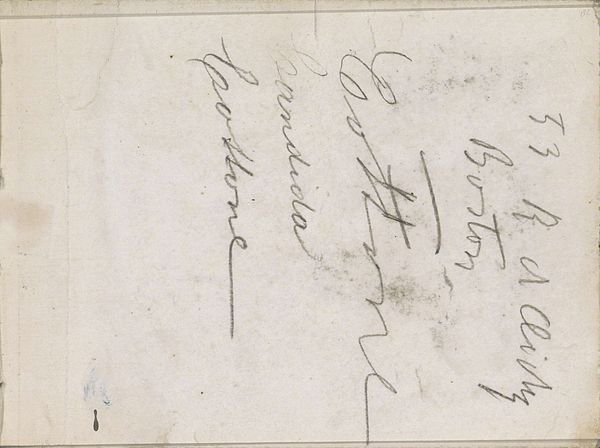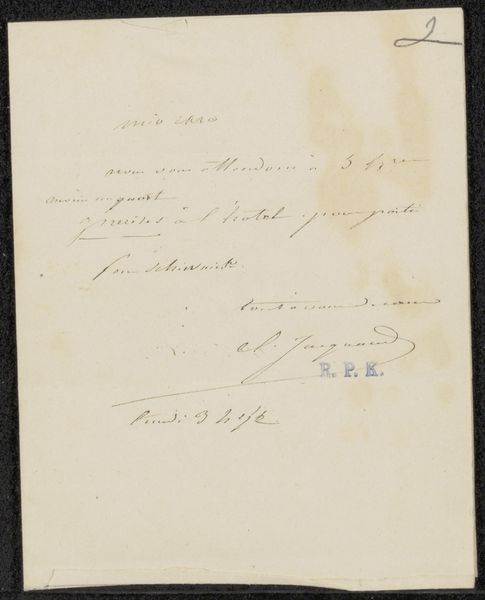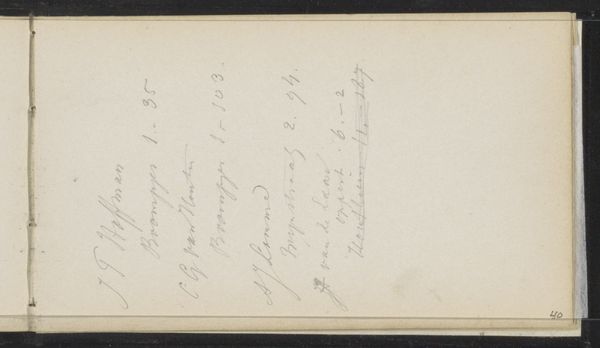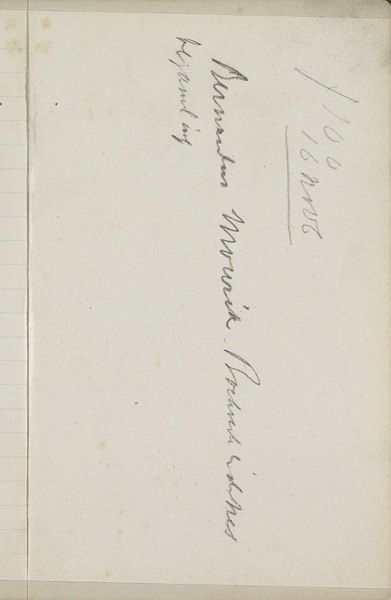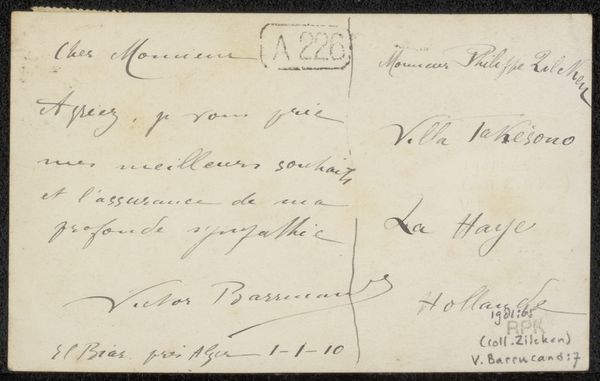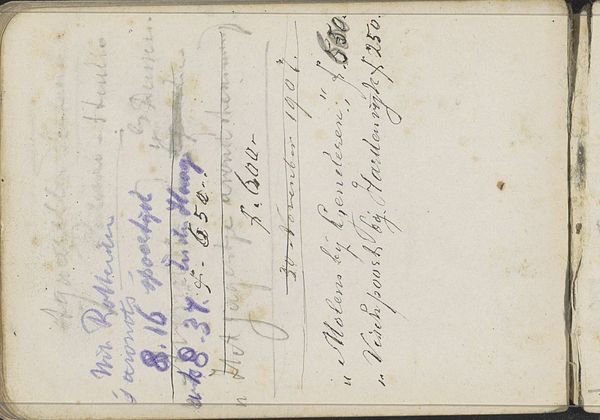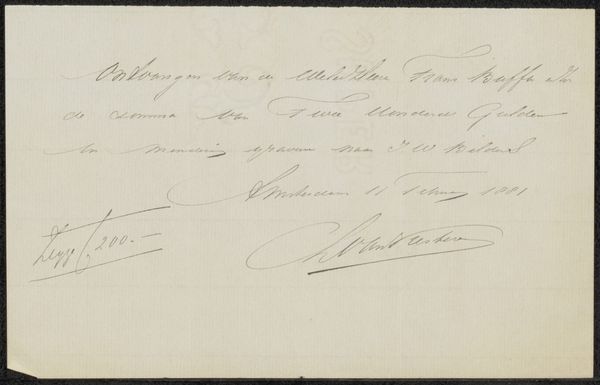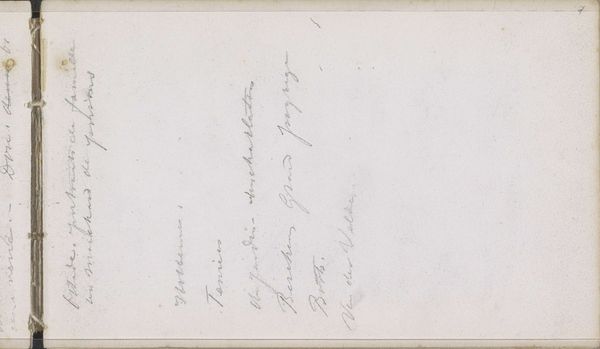
drawing, paper, ink
#
drawing
#
paper
#
ink
#
calligraphy
Copyright: Rijks Museum: Open Domain
Curator: We are looking at “Names and Addresses,” a work made between 1864 and 1880 by Johannes Tavenraat. It's currently housed here at the Rijksmuseum and consists of ink on paper, a beautiful example of calligraphy. Editor: It feels very intimate, almost like stumbling upon a private letter or a confidential ledger. There's something inherently intriguing about handwritten script, especially when it's presented so starkly. Curator: Right. Consider the period, though. The meticulous craftsmanship here speaks to a particular culture of correspondence and record-keeping—where handwriting was both an art and a necessity. Editor: Yes, and who were these people? These are likely the names and addresses of various societal actors—merchants, artisans, intellectuals. The work becomes a document reflecting specific power dynamics of the time. Curator: Precisely. We see lists referencing printers and agents. These materials used and who might consume them. Paper, ink, the labor invested in producing the piece; all things that underscore the artwork's value and functionality beyond its purely aesthetic qualities. Editor: It makes me consider how we categorize artwork itself, too. This piece defies the clear boundaries between a utilitarian list and artistic expression. Curator: And how class, race, and gender impacted access to resources like paper and education necessary for sophisticated handwriting during the period, highlighting existing social and material disparities. Editor: Indeed. Each flourishing stroke carries within it those narratives of both privilege and, potentially, exclusion. So while appearing as simply a registry of names and addresses, this becomes charged historical documentation of individuals' existence, intertwined with economic and sociocultural contexts. Curator: Analyzing Tavenraat's work reminds us that art is not created in a vacuum; material conditions fundamentally shape both artistic production and our own interpretation. Editor: Absolutely. This artwork really challenges us to interrogate how we read art and approach it as evidence within a larger, interconnected framework of human experiences.
Comments
No comments
Be the first to comment and join the conversation on the ultimate creative platform.
